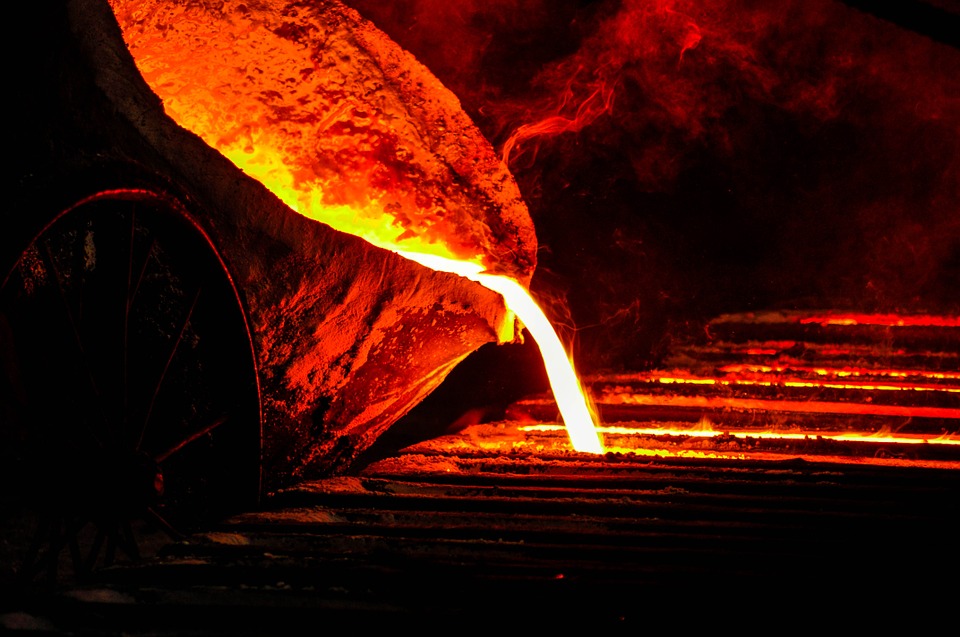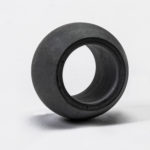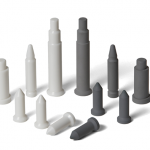Updated: Originally published on 25/10/2018
Silicon nitride (Si3N4) ceramics have outstanding thermal shock resistance and ultra-high temperature strength values, exceeding many technical ceramics in terms of their resistance to thermodynamic stress. The main challenge associated with manufacturing silicon nitride for industrial applications is of cost-effectively achieving full densification of green bodies. Hot pressing methods yield fully dense, high-performance technical ceramics but at excessive costs.

Pressureless sintering of silicon nitride was envisaged to be a cost-effective solution to this issue. In this process, raw materials, including aluminium oxide and rare earth elements such as yttrium oxide, are combined with silicon nitride and densified in a nitrogen atmosphere at refractory temperatures (>1700°C) to form sialon ceramics. This yields ultra-high strength sialons with exceptional mechanical properties at a fraction of the cost of hot pressing. The only drawback to this method is that an intragranular glassy phase is formed within the crystal structure of the green body, which may impede the technical ceramic’s resistance to mechanical fatigue and creep, especially in ultra-high temperature conditions.
What is Creep Deformation & How Does it Affect Temperature Strength?
Otherwise known as creep failure deformation, creep is a form of mechanical deformation that occurs over time in response to sustained thermodynamic stress. It is measured as a function of physical change over time under constant stress and temperature values. These measurements can be used to determine a material’s creep rate and to predict time until mechanical failure under abnormal operating conditions. Technical ceramics must be measured for creep resistance to determine the longevity of components in high-temperature operating environments.
Mechanical fatigue is the gradual degradation of a technical ceramic’s strength and load-bearing properties in response to progressive strain. Creep and mechanical fatigue are not mutually exclusive phenomena and it is possible for localized weaknesses to skew the creep rates of components and eliminate the accuracy of preliminary measurements. The proclivity towards mechanical fatigue may also increase during secondary and tertiary creep phases.
The Importance of High-Temperature Strength
Sialon technical ceramics can still exploit excellent creep resistance, provided the intermediate glass is converted into a refractory crystalline phase during pressureless sintering. This maintains both the high strength and high-temperature resistance properties of the material for long component service in refractory applications.
It is also possible for sialons that have not been subjected to intergranular crystallization to resist creep, provided their mechanical and thermal characteristics operate in tandem to resist application-specific stress. This may be qualified by the technical ceramic’s maximum or continuous operating temperatures. The sialon products available from International Syalons display exceptional resistance to thermodynamic stress under severe operating conditions. These include:
- Syalon 101: maximum operating temperature of 1200°C
- Syalon 110: maximum operating temperature of 1450°C
- Syalon 050: maximum operating temperature of 1450°C
- Syalon 501: maximum operating temperature of 700°C
Technical Ceramics from International Syalons
International Syalons is one of the leading authorities in sialons and technical ceramics for demanding industrial applications. We provide an extensive range of materials and products formulated for specific thermodynamic conditions.
Read more about the thermal properties of silicon nitride in our focus on thermal conductivity
Or, if you have any specific questions about our technical ceramics simply contact us directly.



